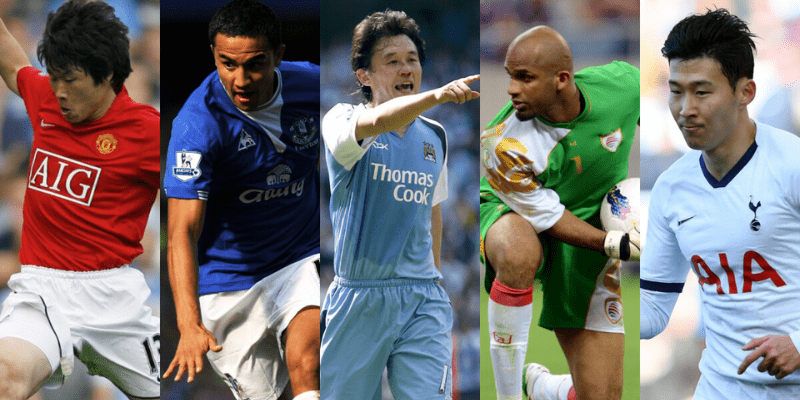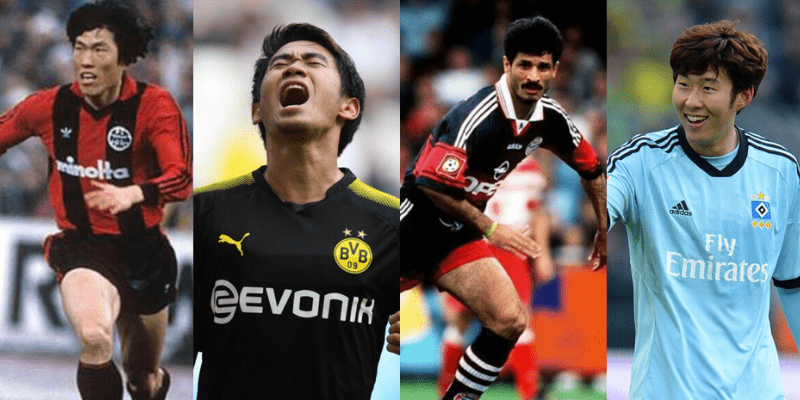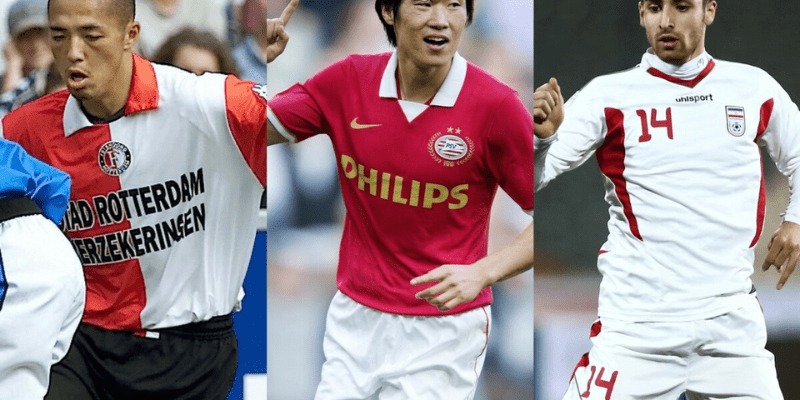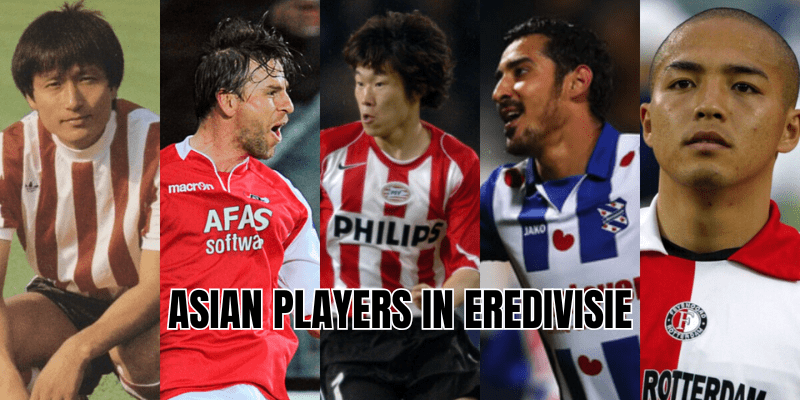From Takashi Iwanaka’s early forays to the era of Ko Itakura, Asian players in Eredivisie have carved a path often underappreciated but never insignificant. In this article, DaoKick will guide you through the history, impact, and current crop of Asian talents in Dutch top-flight football — their numbers, stories, and what to watch next.
The search intent behind “Asian players in Eredivisie”

Before diving in, it’s useful to understand what readers are seeking when they google “Asian players in Eredivisie”. The search likely falls into several clusters:
- ✅ A list of current Asian players in the Dutch league
- ✅ Historical legacies of Asians who succeeded in the Netherlands
- ✅ Statistical impact
- ✅ Profiles or interviews of standout Asians in Eredivisie
- ✅ News on new signings or transfers from Asia to Eredivisie
This article aims to satisfy all those intents — combining lists, biography-style profiles, stats, and narrative. We’ll also sprinkle related keywords and LSI phrases to boost SEO relevance.
A brief history: Pioneers and first wave

The presence of Asian players in Eredivisie started modestly, but its roots can be traced back to the broader phenomenon of foreign players in Dutch football. Over the decades, Asia’s representatives have often been few, but some stood out.
- The Eredivisie’s foreign player quota and scouting focus historically favored European, African, and South American talent.
- Nevertheless, a few Asians made inroads in the late 20th and early 21st century — though none quite achieved superstar status in the Netherlands.
- Some names are often cited in “Asia’s Greatest in Eredivisie” discussions — though interestingly, most lists mix in other leagues too, reflecting relative scarcity in the Netherlands compared to, say, the Bundesliga or J1 League.
One notable early example: Alireza Jahanbakhsh, an Iranian winger, left a mark. In the 2017–18 Eredivisie season, he became the first Asian to claim a top scorer title in a major European league — scoring 21 league goals. His striking success challenged the narrative that Asians couldn’t thrive in fast-paced, highly tactical European setups.
But that was both breakthrough and outlier. Over many seasons, Asian players in Eredivisie remained marginal in number, though not in influence.
The statistics: Representation in 2025–26 and trends

Foreign players by country (2025–26)
In the current 2025–26 Eredivisie season, foreign players are a significant fraction. Among them:
- Japan is the most represented Asian country, with about 8 players in the league.
- South Korea has 2 players.
- Indonesia also appears, with 5 players recorded in the foreign-player stats (though not all are first-team regulars).
- Japan’s tally gives it roughly 3.5% share among all foreign players in the league.
- South Korea holds about 0.9% share.
- These numbers underscore that while Asia is present, it remains a “small continent” in Dutch football.
These data emerge from analyses of foreign representation in the Eredivisie (2025–26) via foreign-player breakdowns in Dutch league databases.
Trends over time
- The Japanese contingent in Dutch clubs has gradually increased.
- Some Asian players have used the Netherlands as a stepping stone to bigger European leagues.
- The impactful exceptions (e.g. Jahanbakhsh) often become reference points in Asian football media when discussing success stories.
- Transfer activity — such as recent signings — suggests Dutch clubs are becoming slightly more open to scouting in Asia.
Current key Asian players in Eredivisie (2025–26)
Let’s spotlight some players currently active (or very recently transferred) in the Netherlands from Asia — those driving the narrative of Asian players in Eredivisie today.
Ko Itakura (Japan → Ajax)
- In August 2025, Ajax signed Japanese defender Ko Itakura from Borussia Mönchengladbach on a four-year deal. He returns to the Netherlands after earlier loan spells at FC Groningen.
- He is Ajax’s first Japanese player in club history.
- In his debut match — a 2–2 draw — he was forced off due to injury, dampening early expectations.
- Itakura plays primarily as a centre-back or defensive midfielder, and carries a market valuation around €12 million.
- His transfer signals confidence in Asian defenders handling the physicality and tactical demands of Eredivisie.
Seiya Maikuma (Japan → AZ)
- Japanese right-back Seiya Maikuma joined AZ in 2024 on a four-year contract.
- Though not yet a household name in Europe, his progression is watched by fans in Japan as AZ invests in fullbacks.
- He has already earned caps for the Japan national team.
Kodai Sano (Japan → NEC Nijmegen)
- Young midfielder Kodai Sano, born in 2003, is at NEC Nijmegen.
- He has played regularly since his move and even made his senior debut for Japan in 2025.
- Sano typifies a rising generation of Japanese talent using the Eredivisie platform to mature technically and physically.
Indonesian-origin players
- Players of Indonesian descent or with dual-nationality also appear in the database of Asian players in Eredivisie.
- For example, Mees Hilgers — though Dutch-born — is often referenced in the context of Indonesia’s football discourse because of heritage and eligibility.
- Mauro Zijlstra, a young forward at Volendam, is a more recent case: he was born in the Netherlands but represents Indonesia internationally.
These examples reflect both direct transfers.
Top 5 Asians who left a legacy in Eredivisie
Beyond current stars, a handful of Asian players carved paths that endure in Dutch football lore:
- Alireza Jahanbakhsh (Iran) — His 21-goal season remains a highlight.
- Kazu Miura (Japan) — Though his Eredivisie impact was modest compared to his broader Asian fame, he was one of the first high-profile Japanese exports.
- Shinji Ono — While more known for his J-League or German spells, Ono had a Dutch stint that inspired later Japanese exports.
- Yasuhiko Okudera — Not a Dutch league player but a pioneer in Europe; his success influenced Dutch clubs’ openness to Asians in general.
- Takashi Okada / smaller names — Many fringe or short-term players helped open doors even if their names fade in memory.
In fact, inside Asian football journalism, “Asia’s Greatest Eredivisie Players” lists combine European, Dutch, and Asian media perspectives — favoring those with visible impact.
Today, Ko Itakura’s arrival may allow him to join that shortlist should his career in Amsterdam flourish.
How Dutch clubs view Asian players: strategy, challenges, and appeal
Why Dutch clubs occasionally tap Asia
- Technical skills: Many Asian players, especially.
- Market opportunities: Signing an Asian player can expand a club’s brand presence in those countries, increasing broadcast and sponsorship appeal.
- Cost value: Asian players can sometimes offer good value compared to European equivalents, especially younger ones.
Hurdles and concerns
- Physicality & adaptability: Dutch football demands strength, speed, and adaptation to different climate and tactical rhythms. Some Asian players struggle in that transition.
- Stereotypes and limited scouting: Clubs may hesitate to invest heavily until a player proves resilience in Europe.
- Regulation & quotas: Though the Netherlands doesn’t impose severe restrictions on foreign players, teams often balance squad composition carefully.
Success factors
For an Asian player to thrive in Eredivisie, the formula often includes:
- Early integration (learning Dutch, language, culture)
- Patience — many start in reserve teams or smaller clubs
- Solid physical preparation
- Tactical flexibility
Ko Itakura’s move to Ajax — a club with high expectations — shows that this formula is being trusted at top level.
What to monitor: future transfers & trends
- Will more Japanese players join Ajax, PSV, or Feyenoord?
- Will Korean players begin to match Japanese representation in the Netherlands?
- Can Indonesian-eligible players translate dual-heritage into regular first-team roles?
- Will Ajax or AZ scout directly in Asia for youth acquisitions?
- And importantly, will any Asian player in Eredivisie contend for Player of the Season status?
The incoming months will test whether Asian players in Eredivisie shift.
Conclusion
Asian players in Eredivisie have journeyed from rare outsiders to present-day contributors, thanks to trailblazers like Jahanbakhsh and the current wave of signings such as Ko Itakura, Seiya Maikuma, and Kodai Sano. These athletes navigate physical demands, cultural adaptation, and expectations — but their presence adds technical flair, global appeal, and fresh narratives.
If you’re curious about a specific player — or want a full list, match reports, or top-10 rankings — DaoKick has you covered. Stay tuned for dee



